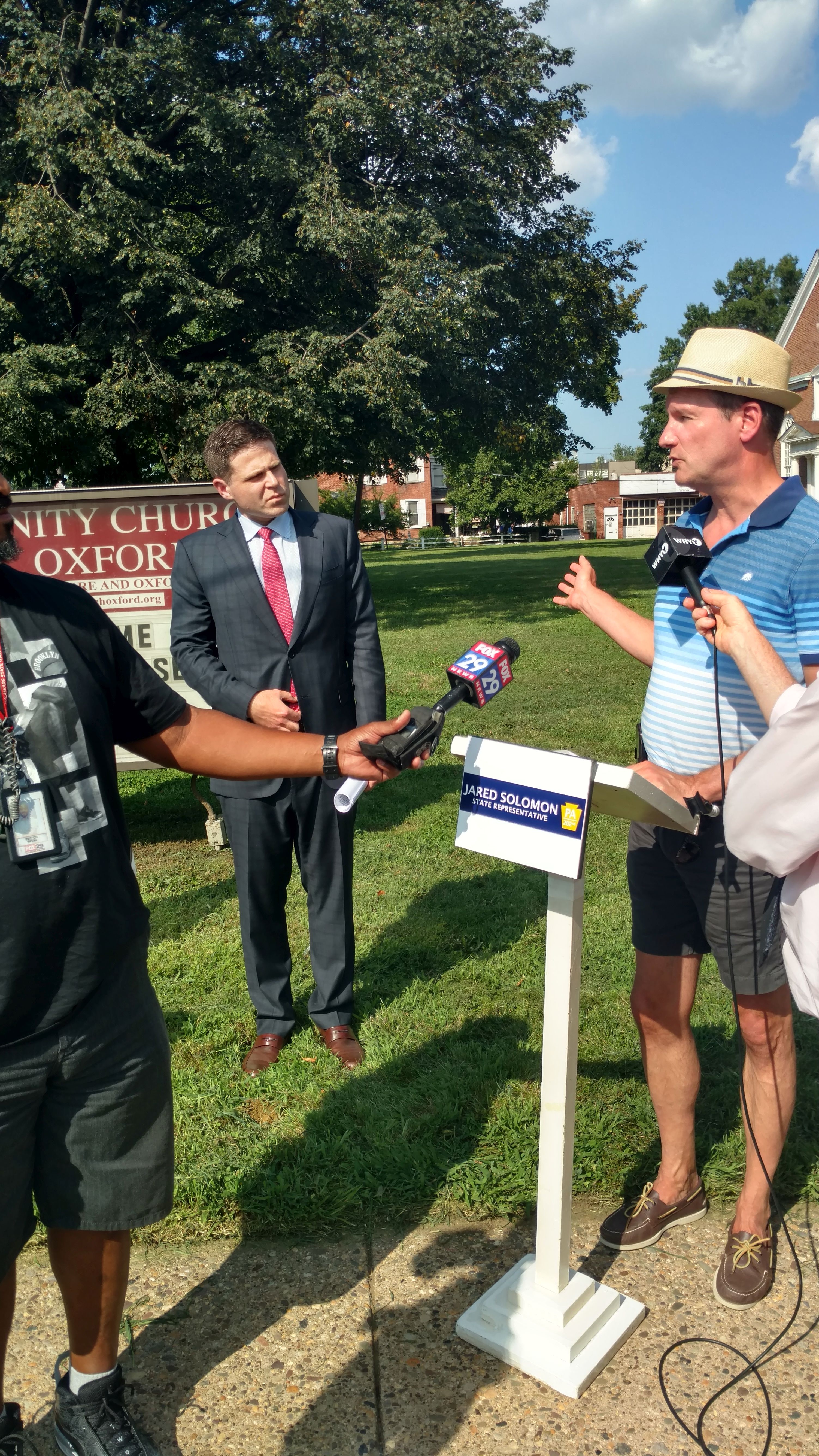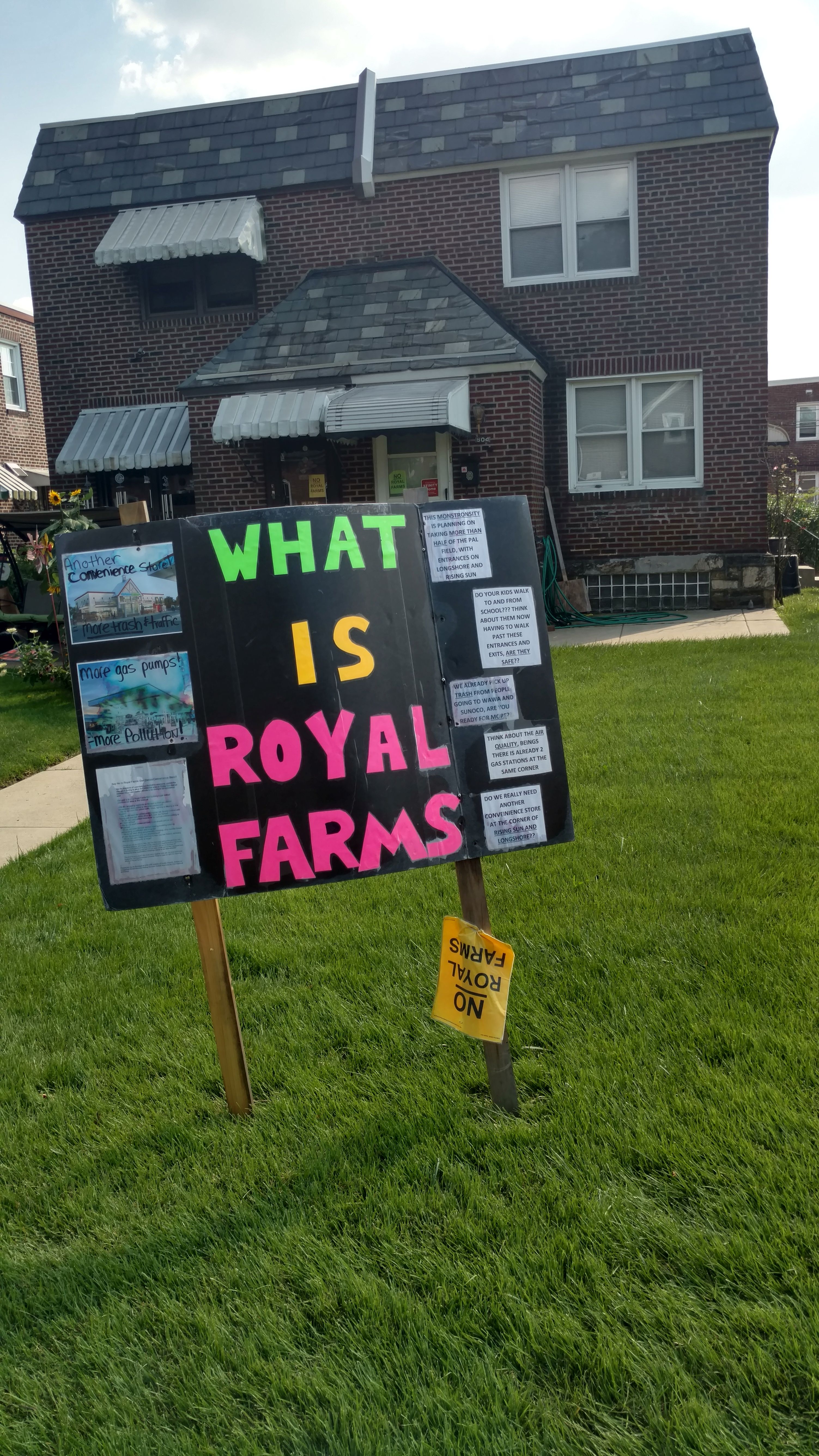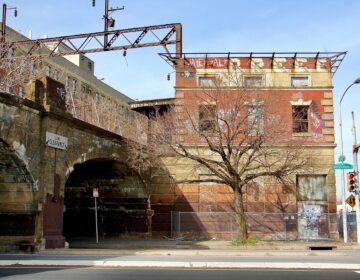Parish the thought: Lawncrest neighbors fight plan to replace church building with Royal Farms

The venerable Trinity Oxford Church, in Northeast Philadelphia’s Lawncrest section, wants to lease roughly half of its land for a new Royal Farms gas station and fried chicken emporium. The proposal would install the new business at the intersection of Rising Sun Avenue and Longshore Avenue, where Trinity Oxford’s parish house complex now stands.
Local residents, however, say they are prepared to fight the proposal to the bitter end.
“This is an obscenity,” said Samuel Phoenix, a near neighbor who is helping to organize against the project. “This thing isn’t going to be the size of a gas station; it’s going to be the size of a truck stop. But not only a gas station because, hey, it’ll have chicken. They actually tried to use that as a selling point.”
On Wednesday evening, state representative Jared Solomon held a press conference to announce the submission of a historical nomination to the local historic register for the Parish House buildings. The document will be considered by the Committee on Historic Designation next month, which will decide whether to recommend it to the larger Historical Commission. If added to the local register, the Colonial Revival-style buildings would be very difficult to demolish — effectively blocking the Royal Farms project.
“The historical significance and cultural richness of this institution is so clear,” said Solomon. “Business corridor development is one of my main priorities. But what kind do we want? This is just step one to ensure we not only get development but the right kind of development.”
PlanPhilly was unable to reach Royal Farms or Trinity Oxford Church before publication. The story will be updated when a response is received.
Solomon was joined by staffers of Congressman Brendan Boyle and former state representative Mark Cohen (whom Solomon unseated last year). The Preservation Alliance of Greater Philadelphia drafted the nomination to protect the buildings, and executive director Paul Steinke spoke at the press conference as well.
Community opposition to the proposal dates back to its inception and their stated reasons for the resistance to Royal Farms are legion.
The intersection already hosts two gas stations, one of which is attached to a Wawa. The Royal Farms would also colonize a playing field behind the parish house, which has been used by the Police Athletic League for decades until the church ended their tenure this year. (The parish house also held a daycare center and offices for the Police Athletic League, both of which were removed from the building to make room for Royal Farms.)
“We are fighting for green space,” says Heather Miller, a near neighbor who was out canvassing the neighborhood in advance of the press conference. “This is the only open area in the neighborhood that is safe to walk to. It’s a gathering space, which is something this community lacks.”
Miller and other community members also expressed fears that adding a third gas station, and a 62-space parking lot abutting Trinity Oxford Church’s historic cemetery, will attract panhandlers, drug users, and sex workers. She said the opioid epidemic is already ravaging the neighborhood, and adding more dead space will draw more troubled people to the area.
The near neighbors have already gathered 1,000 signatures in opposition to the Royal Farms proposal.
“We want to stop the decline,” said Miller, who grew up in Lawndale and said she wants to retire in the community. “I’m out here in solidarity, fighting for the community.”
Solomon says that he appreciates that the parish house and the other church property unprotected by historic preservation needs to generate funds for Trinity Oxford Church. The Royal Farms proposal isn’t just a lark. Obviously, the hallowed institution needs funds.
Trinity Oxford Church itself dates back to 1711 and is one of the oldest churches in the country. The church itself is already historically protected, but when it was added to the local register in 1956, the parish house buildings were too new to be eligible. They had been built in 1928, in a Colonial Revival-style to honor the Sesquicentennial celebration of 1926.
Solomon says that historically protecting the buildings of the parish house complex will just be the first step. U.S. Rep. Boyle is working to secure historic tax credits for the property, which both elected representatives hope could be used to entice developers to make use of the buildings in a less contentious fashion.
“This unique property has an historical significance that should be preserved, not eliminated by a wrecking ball,” Boyle said in an email statement. “My staff and I are working closely with neighbors and opposition groups. I will assist when and where we can to aid in… preserving this irreplaceable historical property.”
Miller says the near neighbors have been holding peaceful, informational pickets at the property every Sunday and that they will be out there again in a few days.
“We are trying to go after it every single angle that we can,” says Miller. “Why do we need another gas station?”
WHYY is your source for fact-based, in-depth journalism and information. As a nonprofit organization, we rely on financial support from readers like you. Please give today.







